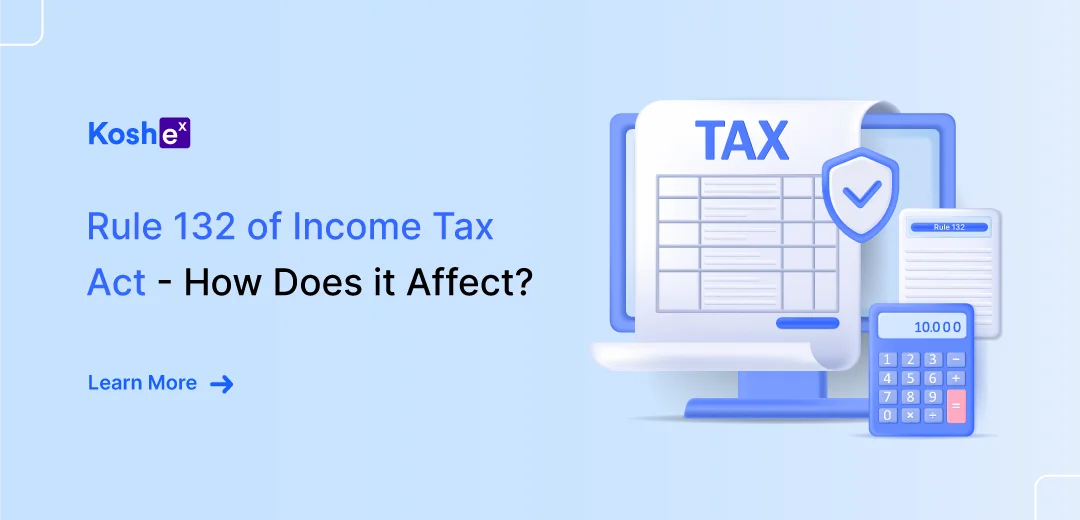Best NPS Schemes In India To Invest In 2024
Planning for retirement is a must once you start earning a salary. There are several investment instruments that can help you build a solid retirement corpus.
In this blog, we will talk about National Pension Scheme, the 10 best schemes, and how they can help you achieve your financial goals.
More and more Indians are entering the workforce every year, with the Gen Z being the latest generation to start getting their paychecks. However, most Indians are not prepared for retirement.
You might wonder why a person in their 20s needs to worry about their retirement. If we see the way inflation is rising in recent months, we can understand why it is important to start saving for retirement as early as possible. But most Indians are not prepared, according to a study.
More than 80% of urban Indians fear they will run out of money in retirement, says the Indian Retirement Index Study conducted by Kantar for Max Life Insurance Company. The second edition of the study showed that 59% of urban Indians believe their savings won’t last even 10 years in retirement.
The study, which was published in late September of 2022, reveals how Indians are not confident about their retirement savings.
There is a need for us to invest in smart investment instruments so that we can build a good corpus that can help us live comfortably after our retirement.
One such instrument is the National Pension Scheme and in this blog, we will be discussing what the scheme is, how it works, its types, and its benefits. We will also give you a list of the ten best NPS schemes in India to invest in this year.
What Is The National Pension Scheme (NPS)?
Launched in 2004, NPS is a government-sponsored pension scheme that was created for government employees. It is being administered and regulated by Pension Fund Regulatory and Development Authority (PFRDA).
A subscriber can contribute regularly to a pension account during their working life, withdraw a part of the corpus in a lumpsum, and use the rest of the corpus to buy an annuity to secure a regular income after retirement.
The National Pension Scheme encourages people to invest in a pension account at regular intervals during the course of their employment.
The scheme is open to employees from the public, private, and even the unorganized sectors.
What Are The Types Of NPS Accounts?
There are two types of NPS accounts – Tier I NPS Accounts and Tier II NPS Accounts.
Tier I NPS Account
The Tier I NPS account is available for Indian citizens between the age of 18 and 65. This account can be opened by depositing ₹500 and an amount of ₹1000 has to be deposited in a financial year in order to keep the account active.
Investments of ₹2 lakhs per annum in this account are exempted from tax under Section 80C and Section 80CCD. The returns earned on NPS tier I accounts are exempted from tax.
Tier II NPS Account
The Tier II NPS Account is a voluntary account and can be opened only if an individual already has an NPS Tier I account.
You have to pay a minimum investment amount of ₹1,000 at the time of opening the account. There is no mandatory annual contribution in the tier II NPS account and there is no maximum limit of investment amount into this account.
check out our NPS Calculator
Contributions to Tier 2 accounts can be withdrawn at any time. The withdrawals from Tier 2 accounts are added to the individual’s total taxable income and are taxed as per the income tax slab.
This means there are no tax benefits in the tier II NPS account. Only government employees get tax benefits if they stay invested for three years.
If you wish to put your money in NPS and want to learn more about your maturity amount and how much interest you can accrue on your investment, check out the NPS Calculator by Koshex.
Who Should Invest In The NPS?
The National Pension Scheme is ideal for anyone who wants to start for their retirement early on and has a low-risk appetite.
When you have a private-sector job, a regular pension will help you in your retirement years. Hence, periodic investments in NPS can have a major impact on your life post-retirement.
In fact, salaried people who want to make the most of the 80C deductions can also consider investing in this scheme.
Top 10 Best NPS Schemes In India
[LIST OF 10 SCHEMES]
What Are The Benefits Of NPS?
There are several benefits to investing in the National Pension Scheme. We have listed them below.
Tax Benefits – Employees who contribute to NPS can get a tax deduction of up to 10% of pay (Basic + Dearness Allowance) under Section 80CCD(1), subject to a maximum of ₹1.5 lakhs under Section 80CCE. They also get a tax deduction of up to ₹50,000 under Section 80 CCD(1B) in addition to the overall limit of ₹1.5 lakhs under Section 80CCE.
Returns – NPS invests in a combination of equities, bonds, and government securities, which offers market-linked returns to subscribers. The scheme offers returns that are much higher than other traditional tax-saving instruments like the Public Provident Fund (PPF).
check out PPF Calculator
The scheme has been in effect for several years and until now, it has delivered 9% to 12% annualized returns. With NPS, you are given the option to change your fund manager if you are not happy with the performance of the fund.
Pension Benefits – Upon retirement, NPS subscribers can withdraw up to 60% of the corpus as a lump sum and use the remaining 40% to buy an annuity, which offers a regular pension income.
Annuity Options – NPS subscribers have the option to choose from a range of annuity plans and providers. This offers flexibility in terms of pension income.
Transparency – NPS offers subscribers with regular account statements. This can help subscribers track their pension savings and investment performance.
Risks – According to the new regulation, subscribers can allocate up to 75% of their funds to equity under active choice in a Tier-I account without any tapering requirements once they turn 51 years of age.
The option to allocate 100% of the subscriber’s contribution to Asset Class E (Equity) in Tier – II accounts under active choice is permitted by the statutory regulatory body without any restrictions beginning at 51 years of age.
On the other hand, when a subscriber reaches the age of 51, the 75% cap on asset class E is lowered by 2.5% annually and reallocated to government securities. This stabilizes the risk-return equation in the interest of investors. This means the corpus is somewhat safe from equity market volatility.
In The End…
The National Pension Scheme is a great investment instrument for private-sector employees. It is important to start investing in them as early as possible so that you can have a comfortable retirement life. It also helps you save ₹2 lakhs in taxes, so NPS acts as a good tax-saving instrument.
It also offers high returns and doesn’t carry too many risks, making it a perfect option for risk-averse investors. However, if you wish to invest in an instrument, that has more equity exposure, you can consider investing in equity mutual funds.
We hope this article helped you understand all about NPS and the ten best NPS schemes you can invest in in India in 2024.
If you wish to learn about other personal finance topics or investment instruments, you can check out our other blogs in our Blogs section or explore our Offerings section.
Also, you can create a free account with Koshex to track your net worth in real-time, save smartly, invest in personalized recommendations, build efficient money habits, and more.
Check out Koshex today and take your financial game to the next level.









Leave a Comment